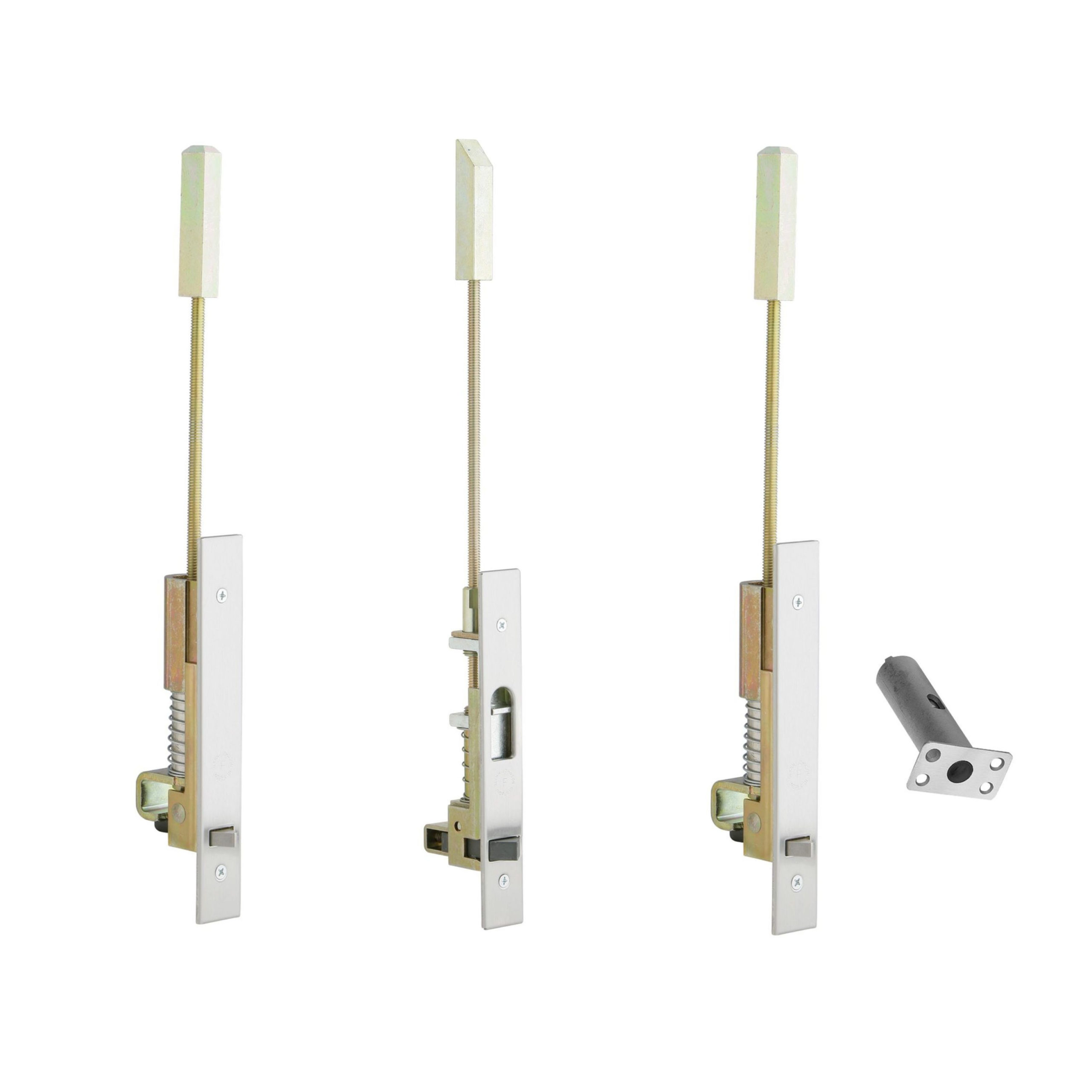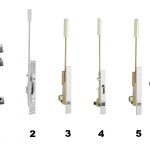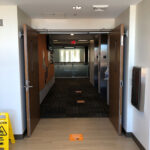 A Quick Question came up recently, regarding pairs of corridor doors in health care facilities. These are not cross-corridor double-egress pairs in smoke barriers (here’s an article on those). This question is related to pairs of non-fire-rated doors in corridor walls, for example, openings leading to patient rooms. Here’s the question:
A Quick Question came up recently, regarding pairs of corridor doors in health care facilities. These are not cross-corridor double-egress pairs in smoke barriers (here’s an article on those). This question is related to pairs of non-fire-rated doors in corridor walls, for example, openings leading to patient rooms. Here’s the question:
On a pair of non-fire-rated corridor doors in a health care facility, is one automatic flush bolt required for the inactive leaf, or are two bolts required (top and bottom)?
The requirements of the International Building Code (IBC) related to these doors are not specific about the latching requirements, other than to say that positive latching hardware is required.
NFPA 101 – Life Safety Code states: Corridor doors utilizing an inactive leaf shall have automatic flush bolts on the inactive leaf to provide positive latching.
There are three basic types of flush bolts – manual flush bolts, automatic flush bolts, and constant-latching flush bolts. Constant-latching flush bolts are a type of automatic flush bolt, where the top bolt latches each time the door is closed. For pairs of patient room doors, I would use constant-latching flush bolts rather than the other type of automatic flush bolts, as standard automatic flush bolts require the active leaf to be closed in order to project the bolt on the inactive leaf. Constant-latching bolts will latch the inactive leaf as soon as it is closed. Manual flush bolts are not permitted for this application, as they do not provide the positive latching required by code for corridor doors in a health care facility.
Whether automatic flush bolts or constant-latching flush bolts are used, there are three possible configurations:
- Top bolt only
- Top and bottom bolts
- Top bolt with an auxiliary fire pin that projects when heated to approx. 450 degrees
Because the current model codes do not require most corridor doors in health care facilities to be fire door assemblies, the top bolt with the auxiliary fire pin would not typically be required. In most health care applications, it’s best to avoid a bottom bolt and floor strike, but would just a top bolt meet the intent of the Life Safety Code? The code does say “automatic flush bolts” but are two bolts really needed in order to ensure that the inactive leaf latches?
There is no definitive answer to this question in the code or in the NFPA 101 Handbook, so I asked for an NFPA staff opinion. The response was that any arrangement where the inactive leaf positively latches when closed should be acceptable to the AHJ. The intent of this requirement is that if a fire occurs, and hospital staff closes the door forcefully, the door latches and does not rebound into the open position.
In my opinion, a constant-latching bolt mounted at the top should satisfy the positive-latching requirement, but the AHJ will always have the final say when the code is not clear. This clarification is on my wish list for the 2027 edition of NFPA 101, but in the meantime…have you had experience with this application? Was one bolt sufficient, or did the AHJ require two?
You need to login or register to bookmark/favorite this content.








You’re absolutely right Lori
Constant latching would be enough and acceptable.
Auxiliary fire pin would not be required.
If I may add in some cases, mortise auto door bottom ( with anti-microbial silicone gasket ) as sometimes they require certain acoustics in patients rooms.
Thanks Bert!
– Lori
As a reminder, the three flush bolts pictured above are designed for–and approved for–use in hollow metal doors only. There are other choices for wood doors.
That’s true…I wasn’t trying to show every option with the photo, but now that you mention it, so many end users prefer extension rod flush bolts over corner wrap flush bolts. If a wood door is not fire rated, these could be installed on a wood door, no?
– Lori
It’s tricky to install one on a wood door–but it CAN be done with a modification to the ‘keeper strip’. It’s ‘J’ shaped to accommodate the ‘U’ channel in the top of hollow metal doors–not flat like the manual flush bolts. But in the absence of a fire rating a hacksaw, a hammer, and plenty of patience can get the job done. In my opinion, the perfect solution is: https://www.assaabloydooraccessories.us/en/products/door-accessories/door-bolts/automatic-flush-bolts/2960/ or https://www.assaabloydooraccessories.us/en/products/door-accessories/door-bolts/automatic-flush-bolts/2960/
I’ll never understand why Allegion hasn’t developed something similar. (And I don’t know anyone at Allegion with that kind of pull 😉
There are two authorities who have occasionally said they overrule other authorities of jurisdiction. One was CMS, the Center for Medicare/Medicaid Services of the federal government and the other was the Joint Commission. I always included them in any change I considered. I always treasured a good inspector as helping me avoid mistakes.
My experience with hospital doors spanned 35 years. Even in older hospitals the doors I observed were around 48″, which I remember being some sort of maximum per leaf. They were however all single leaf and certainly large enough. Most of the beds were in the vicinity of 36″ wide at the time.
The only doors with a small leaf/large leaf I encountered as a hospital engineering director occured in surgery suites. Ours were automatic, top bolt only doors. The small leaf was seldom closed in my tours around. Most surgery suites had equal sized door pairs. I was not a fan of leaving the small leaf unfastened. However, surgeries required 25 air changes per hour delivered in the center of the room so my studies of air flow indicated that the open leaf did not cause significant air flow problems other than to needlessly reduce the positive air pressure of the room. If split door cconstruction had been done to an isolation room, I would have been very worried because to be sure isolation rooms maintain their negative pressure relationships to surrounding areas, the pressure differential necessary to maintain the in-flowing air that was required would have been reduced. Door(s) had to be kept closed. Tom Wolff once said that e-mailing was the modern form of knitting.
Hi Jerry –
It was great when the Joint Commission would answer questions like this for me, but now they will only answer questions for accredited health care facilities. I do, however, answer their questions when they ask me. Oh well.
– Lori